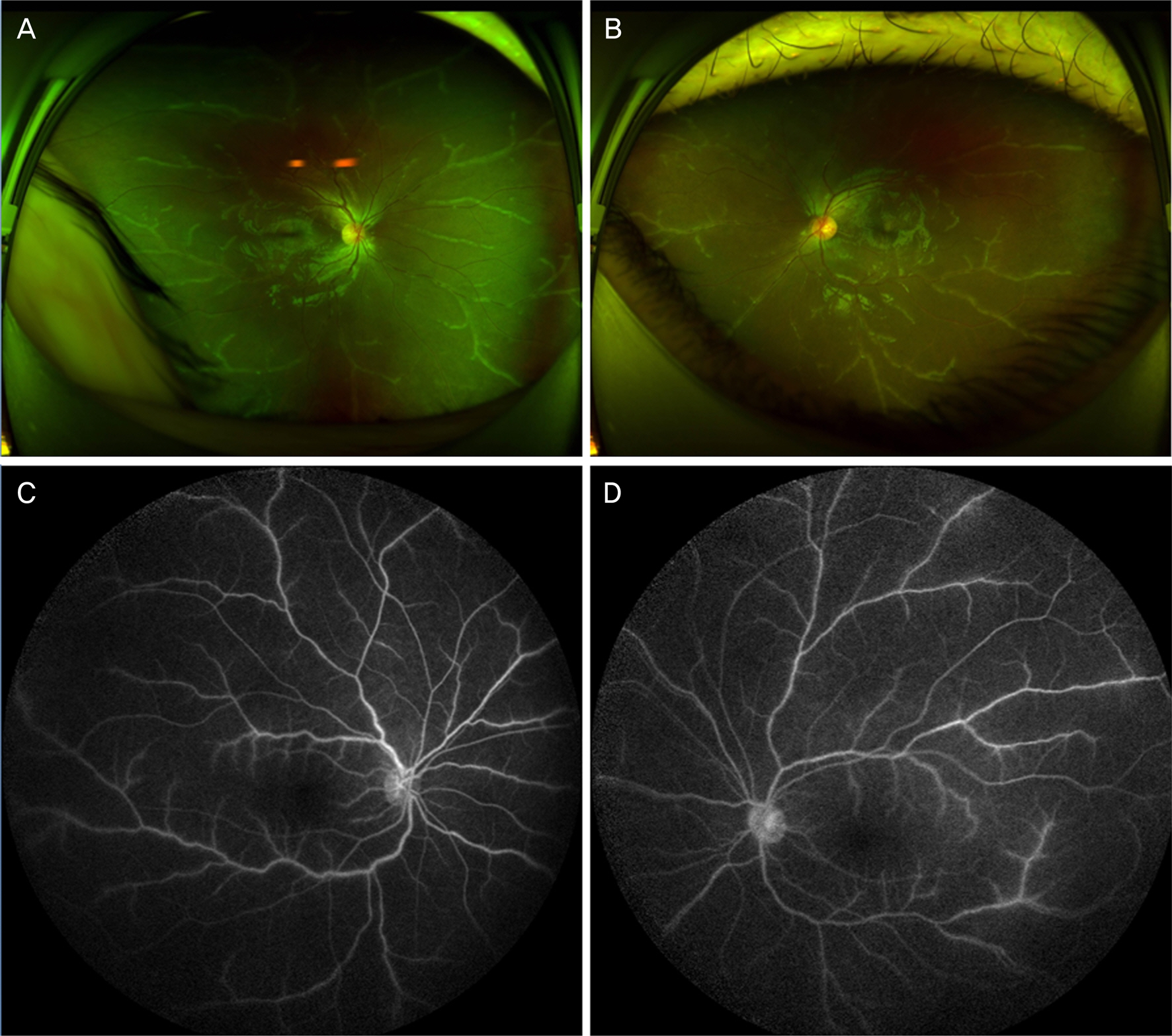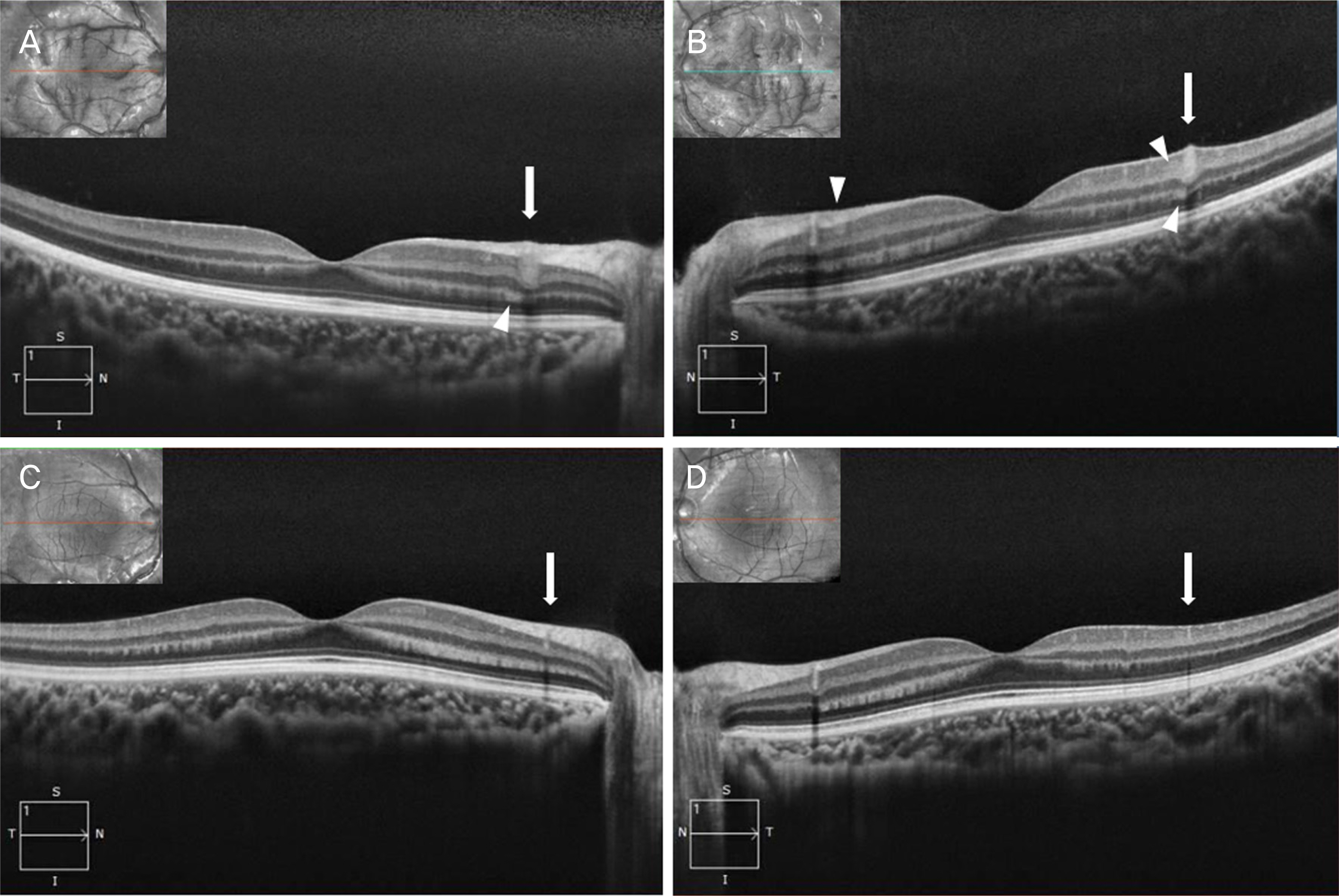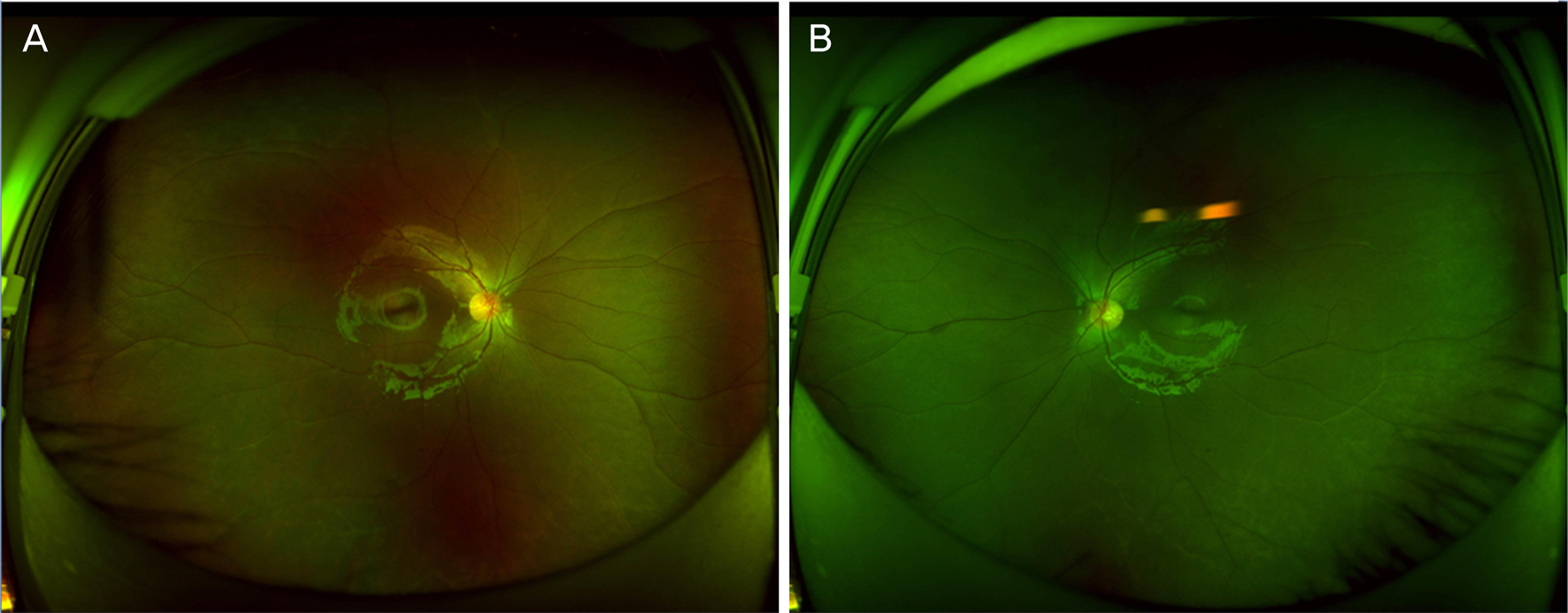J Korean Ophthalmol Soc.
2019 Jul;60(7):706-711. 10.3341/jkos.2019.60.7.706.
Frosted Branch Angiitis Associated with Epstein-Barr Virus Infection
- Affiliations
-
- 1Department of Ophthalmology, Maryknoll Hospital, Busan, Korea. ddalkieco@gmail.com
- KMID: 2453024
- DOI: http://doi.org/10.3341/jkos.2019.60.7.706
Abstract
- PURPOSE
To report a case of frosted branch angiitis (FBA) associated with Epstein-Barr virus (EBV) infection in a child.
CASE SUMMARY
A 7-year-old boy presented with bilateral blurred vision. On ophthalmic examination, his best-corrected visual acuity was 20/25 in the right eye and 20/32 in the left eye. The pupils were equal, round, and reactive to light without a relative afferent pupillary defect. He had normal color vision in both eyes. Slit-lamp examination revealed no abnormalities in the anterior parts of the eyes. Fundoscopic examination revealed prominent white sheathing retinal vasculitis predominantly on the veins in all quadrants, as well as macular edema and irregular foveal reflex in both eyes. Fluorescein angiography showed normal blood flow, but late diffuse staining and leakage of the affected vessels. Spectral domain optical coherence tomography (SD-OCT) showed thickening of the vessel walls, swelling due to hyperreflective material, and hyperreflective retinal depositions. Serological tests and the serum polymerase chain reaction for EBV were positive. A diagnosis of FBA associated with EBV was made. He was treated with systemic acyclovir and steroids. The response was rapid, with improvement in visual acuity to 20/20 in both eyes by day 3. After 7 weeks, all clinical signs resolved and SD-OCT examination showed normal vessel wall thickness and the absence of hyperreflective depositions.
CONCLUSIONS
EBV may present with FBA even in the absence of a systemic sign of primary EBV infection. Thus, EBV should be considered as the etiology of FBA.
MeSH Terms
-
Acyclovir
Child
Color Vision
Diagnosis
Epstein-Barr Virus Infections
Fluorescein Angiography
Herpesvirus 4, Human*
Humans
Macular Edema
Male
Polymerase Chain Reaction
Pupil
Pupil Disorders
Reflex
Retinal Vasculitis
Retinaldehyde
Serologic Tests
Steroids
Tomography, Optical Coherence
Vasculitis*
Veins
Visual Acuity
Acyclovir
Retinaldehyde
Steroids
Figure
Reference
-
References
1. Ito Y. Frosted branch angiitis in a child. Rinsho Ganka (Jpn J Clin Ophthalmol). 1976; 30:797–803.2. Kleiner RC. Frosted branch angiitis: clinical syndrome or clinical sign? Retina. 1997; 17:370–1.
Article3. Walker S, Iguchi A, Jones NP. Frosted branch angiitis: a review. Eye (Lond). 2004; 18:527–33.
Article4. Farrando J, Fonollosa A, Segura A, Garcia-Arumi J. Frosted branch angiitis associated with Epstein-Barr virus systemic infection. Ocul Immunol Inflamm. 2008; 16:41–3.
Article5. Sugin SL, Henderly DE, Friedman SM, et al. Unilateral frosted branch angiitis. Am J Ophthalmol. 1991; 111:682–5.
Article6. Turgut B, Kaya MK, Demir T, et al. Atypical presentation of abdominal branch angiitis from Turkey: a case report. Clinical Optometry. 2010; 2:39–41.7. Victor AA, Sukmana N. Retinal vasculitis associated with Epstein-Barr virus infection, a case report. Retin Cases Brief Rep. 2018; 12:314–7.
Article8. Keorochana N. A case report of Epstein-Barr virus-associated abdominall vasculitis: successful treatment using only acyclovir therapy. Int Med Case Rep J. 2016; 9:213–8.9. Bauer CC, Aberle SW, Popow-Kraupp T, et al. Serum Epstein-Barr virus DNA load in primary Epstein-Barr virus infection. J Med Virol. 2005; 75:54–8.
Article10. Gartzonika C, Vrioni G, Priavali E, et al. Utility of real-time PCR in the diagnosis of primary Epstein-Barr virus infection. J Med Microb Diagn. 2012; 1:118. doi:. DOI: 10.4172/2161-0703.1000118.
Article11. Kim SJ, Barañano DE, Grossniklaus HE, Martin DF. Epstein-barr infection of the retina: case report and review and review of the literature. Retin Cases Brief Rep. 2011; 5:1–5.12. Giani A, Sabella P, Eandi CM, Staurenghi G. Spectraldomain abdominal coherence tomography findings in a case of frosted retinal branch angiitis. Eye (Lond). 2010; 24:943–4.13. He L, Moshfeghi DM, Wong IG. Perivascular exudates in frosted branch angiitis. Ophthalmic Surg Lasers Imaging Retina. 2014; 45:443–6.
Article14. Reichenbach A, Wurm A, Pannicke T, et al. Müller cells as players in retinal degeneration and edema. Graefes Arch Clin Exp Ophthalmol. 2007; 245:627–36.
Article15. Rafailidis PI, Mavros MN, Kapaskelis A, Falagas ME. Antiviral abdominal for severe EBV infections in apparently immunocompetent patients. J Clin Virol. 2010; 49:151–7.
- Full Text Links
- Actions
-
Cited
- CITED
-
- Close
- Share
- Similar articles
-
- Frosted Branch Angiitis Associated with COVID-19-related Multisystem Inflammatory Syndrome in Children
- Frosted Branch Angiitis
- Frosted Branch Angiitis as Ocular Manifestation of Behcet's Disease: Unusual Case Report and Literature Review
- A Case of Frosted Branch Angiitis
- Bilateral Frosted Branch Angiitis in Anti-phospholipid Antibody Syndrome




